Higher classification Gongylophis Order Scaled reptiles | Subphylum Vertebrata Genus Gongylophis | |
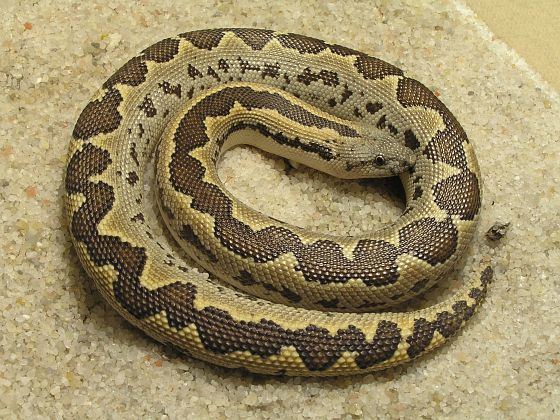 | ||
Similar Gongylophis, Eryx, Eryx johnii, Old World Sand Boas, Eryx tataricus | ||
Gongylophis conicus rough scaled sand boa
Gongylophis conicus, also known as Russell's boa or rough-scaled sand boa, is a non-venomous boa species found in India, Nepal, Bangladesh, Pakistan and Sri Lanka. No subspecies are currently recognized.
Contents
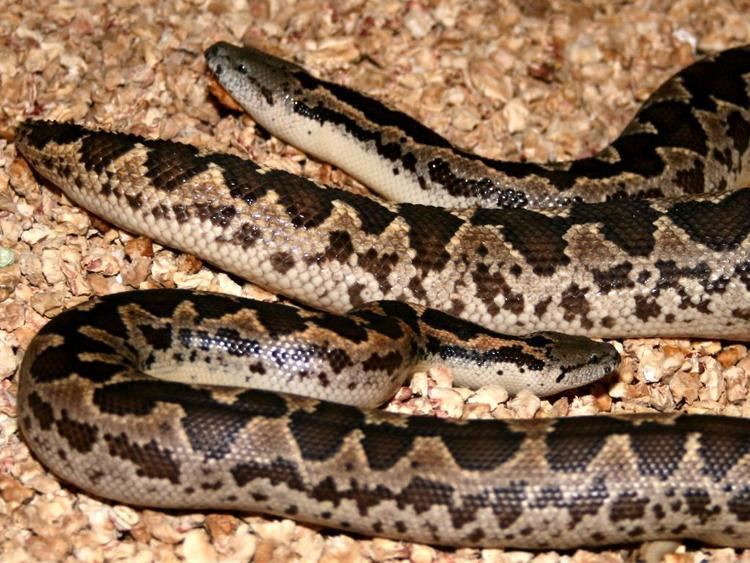
Description
Adults may attain a total length 3 feet 3 inches (99 cm), which includes a tail 3 inches (76 mm) long.
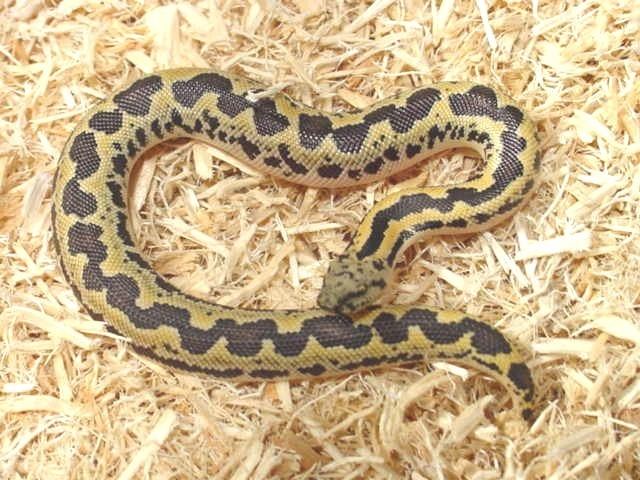
The anterior maxillary and mandibular teeth are longer than the posterior. The head is covered with small scales. The eye is small with a vertical pupil. The dorsal scales are small and keeled. The tail is pointed, not or but very slightly prehensile.
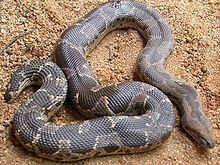
The rostral scale is twice as broad as long, slightly prominent, without an angular horizontal edge. The top of the head is covered with small obtusely keeled scales, except for the nasals and internasals which are enlarged. Interorbitals: 8 to 10. Circumorbitals: 10 to 15. The eye is separated from the labials by one or two rows of scales. Supralabial scales: 12 to 14. Dorsal scales tubercularly keeled, in 40 to 49 rows. Ventral scales: 162-186. The anal scale is single. Subcaudals: 17-24.
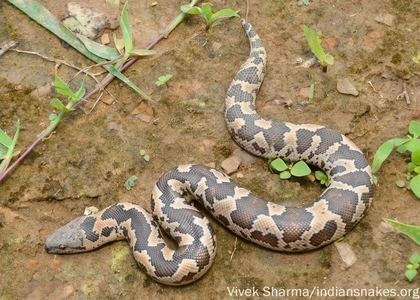
The anterior dorsal scales are only feebly keeled, but these keels increase in size posteriorly to the point that they become so heavily keeled that it can make a squirming specimen really painful to handle. This also makes it look as if the front and rear ends belong to markedly different animals.
Dorsally, the color pattern consists of a broad zigzag band or a series of dark brown blotches on a yellowish or brownish grey ground color. The belly is uniform white.
In India it can be mistaken at first glance for either the Indian python, Python m. molurus, or the deadly Russell's viper, Daboia russelii.
Active at night, it feeds on worms and small mammals.
Geographic range
Found in India south of about 30°N latitude, Nepal, Bangladesh and in the northern arid region of Sri Lanka. The type locality given is "India orientali."
Habitat
Sandy tracts of central and southern India, the Punjab, Kachchh and Sind. It is also found in Meghalaya.
Mimicry
Some herpetologists believe, because D. russelii is so successful as a species and has such a fearful reputation within its natural environment, another snake has come to mimic its appearance. Superficially, the rough-scaled sand boa, has a color pattern that often looks like that of D. russelii, though it is completely harmless.
